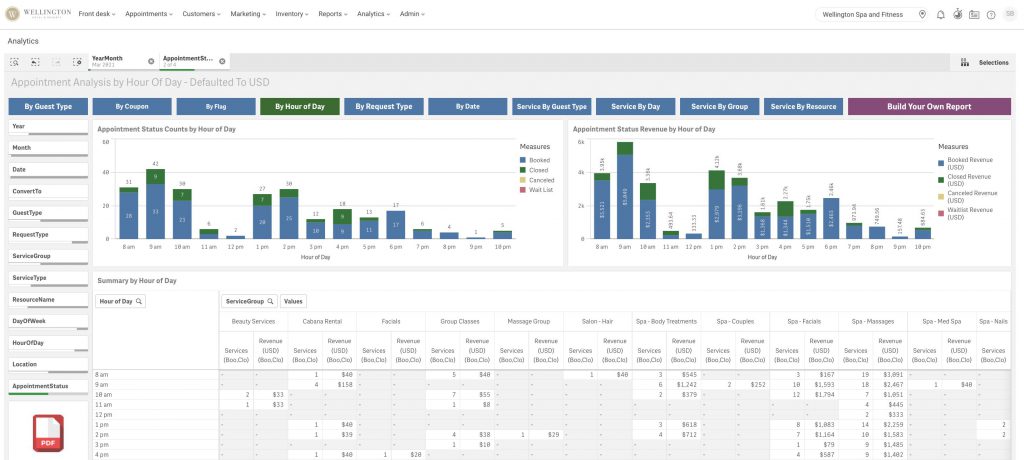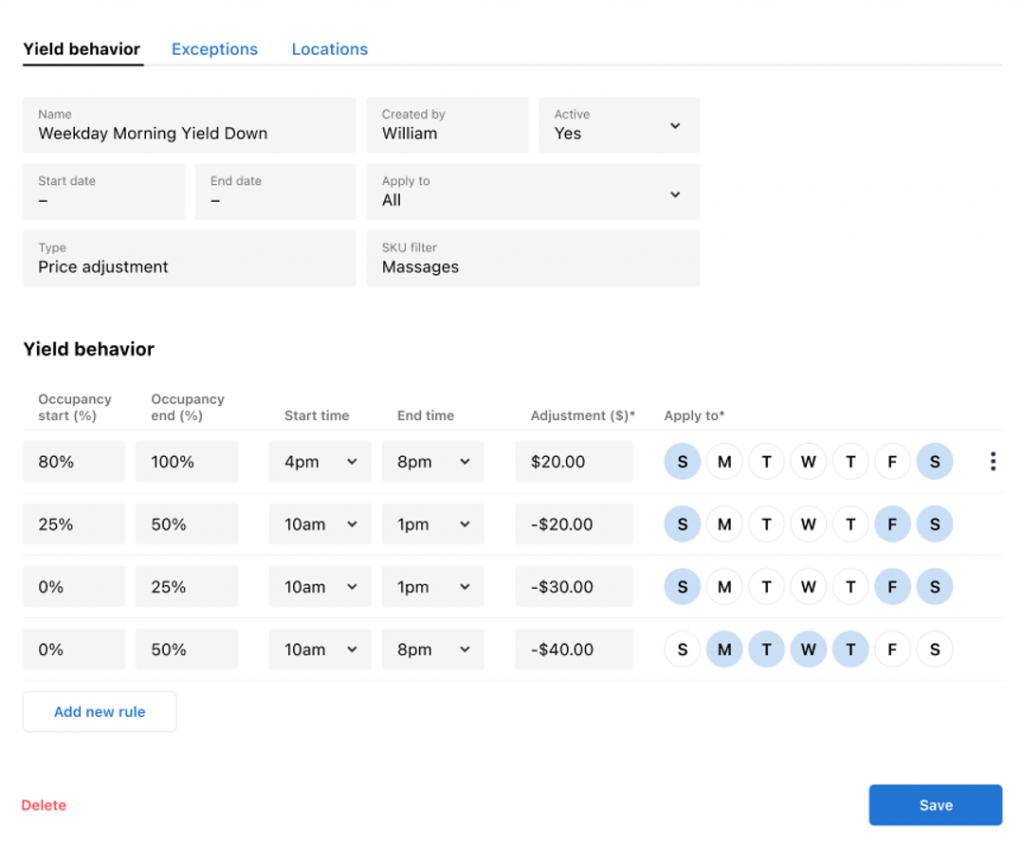Yield revenue management is an incredibly effective method that helps spas boost revenue by optimizing availability, timing, and pricing, eliminating the need for constant discounts.
In this guide, you’ll learn how to apply yield tactics to increase profitability without compromising your brand’s reputation or customer experience.
What Is Yield Management in Hotels and Spas?
Yield management is a strategic approach to selling the right product to the right person at the optimal time and price.
How does this work in practice, though?
Data is the answer. Specifically, historical, real-time, and customer data, as well as general market data and external factors that influence demand and pricing decisions.
With this data in hand, spas and hotels can optimize capacity and adjust availability to maximize revenue. Spas in particular can also use the data to optimize bookings, allocate resources, and time bookings more strategically.
For example:
- Hotels might adjust room rates based on occupancy forecasts and charge premium rates during peak seasons and holidays.
- Hotels could also set minimum length-of-stay requirements or advance booking restrictions to avoid “orphan nights” or better control booking patterns.
- Spas can use the data to set minimum service durations during peak hours to avoid filling prime slots with low-revenue bookings.
- Spas can also assign therapists based on real-time availability and skill set, ensuring specialized services don’t get blocked by general bookings.
The History and Evolution of Yield Management
The concept of yield management evolved from the airline industry after the US deregulated it in 1978.
American Airlines was the first on board, pioneering a technique that provided “Super Saver” fares to maximize revenue per available seat. Through dynamic pricing and forecasting, the airline could balance discounted advance-sold seats with full-fare seats sold closer to departure.
The hospitality industry was slower to catch on, with large chains like Marriott and Hilton adopting room optimization strategies in the 1990s.
Eventually, in the 2000s, spas with limited treatment rooms and high labor dependency began using booking systems with dynamic pricing and capacity management features.
Fast-forward to today, and we can enjoy the benefits AI, machine learning, and big data bring. Everything from weather conditions to competitor rates can be analyzed in an instant, making yield management more accessible and effective than ever.
Why Yield Management Is Essential in the Hospitality Industry
Hotels and spas face a unique challenge: their inventory, whether a room or a treatment slot, cannot be stored or resold once the opportunity passes. An empty room or an unbooked appointment represents lost revenue that can never be recovered.
Traditionally, businesses might turn to discounts or aggressive marketing to fill these gaps.
However, yield management offers a smarter alternative. By understanding demand patterns, spas can charge higher prices during peak periods to offset lower rates during slower times. This approach ensures consistent revenue without devaluing the brand.
Moreover, yield management allows businesses to segment customers effectively, tailoring pricing and promotions to specific groups based on their preferences. This targeted strategy outperforms broad, one-size-fits-all advertising.
And when staff and services are planned around anticipated demand, they do not go to waste, either.
Elements of an Effective Yield Management Strategy
Several key components go into yield management, including:
- Inventory segmentation: The fixed inventory of spa appointments or rooms is broken down into distinct categories. Some examples of this include refundable and non-refundable booking options and standard and deluxe room types.
- Demand forecasting: Historical data and market trends indicate the future demand, allowing businesses to adjust prices and staff accordingly.
- Capacity management: Service capacity (rooms, therapists, amenities, etc.) is aligned with anticipated demand. For instance, setting limits on certain room types or limiting low-value bookings during peak times.
- Timing optimization: Managing when services are offered and for what price based on demand, such as implementing treatment duration requirements or charging more when demand is high.
- Channel optimization: Choosing the most profitable and effective distribution channels for each booking type, like walk-ins, online bookings, online travel agencies, etc.
For hotels, this is fairly straightforward because all of the above chiefly relates to room bookings. Spas can also apply these elements to treatment rooms, staff, and service timings.
Who Uses Yield Revenue Management?
In the past, only large hotel chains had the resources to implement yield management effectively.
Today, affordable cloud-based spa software has leveled the playing field, making these strategies accessible to businesses of all sizes.
Independent spas, resorts, and multi-location chains now use yield management to stay competitive in a dynamic market, no matter how large or small the business is.
Yield Management vs. Revenue Management
Although the terms are often used interchangeably and are closely related, yield management and revenue management are two distinct strategies:
- Yield management maximizes revenue per available unit of capacity and is primarily about pricing and availability.
- Revenue management takes a broader approach, maximizing revenue and profitability across all services, including marketing and customer segmentation.
But one should not be favored over the other. Together, they complement each other and enable smarter, strategic decisions across all areas of the hospitality and wellness industry.
How to Increase Spa Revenue with Yield Management
Here are some practical strategies to boost income without relying on discounts.
Think Twice Before Discounting
Spas commonly offer discounts to fill empty treatment rooms, and this is an accepted approach to dynamic pricing.
But industry leaders often advise against this strategy, particularly in luxury markets.
Suzanne Holbrook, Senior Corporate Director of Spa Operations for Marriott International and Ritz-Carlton, noted in a Spa Executive editorial that discounting can devalue a brand. Additionally, spas might not attract the clientele they want by offering discounts like “Mud Wrap, 40% off,” and ‘’Massage, 30% Discount.”
She explained, “While discounting is an easy way to attract extra demand, it is unfortunately only a short term solution. A discount strategy can have a negative impact on the consumer’s value of treatments, services, and brand. Consumers will want access to the discounted prices most of the time. Discounting will only downtrade revenue potential.”
Instead, spas should focus on strategic pricing to maintain brand integrity.
Do a Deep Dive Data Analysis of Your Operations
Like discounting, implementing dynamic pricing in the wrong way can negatively impact your brand.
Reducing and increasing prices during off-peak and on-peak hours, for example, can work in some markets but alienate people in others.
Customers may question why a weekend massage costs more than a weekday one, especially if their availability is limited.
Fortunately, other dynamic pricing strategies can yield the desired results. They start with taking a deep dive into expenses and profits and structuring operations accordingly.
For example, your spa software’s reporting dashboard can tell you everything you need to know about your best-selling services and peak occupancy times, enabling you to structure operations for maximum profitability.

Get Creative and Don’t Just Do What Everyone Else Is Doing
Offering your most profitable services during peak times is a very effective strategy.
For example, you can offer a $700 couples massage exclusively during peak times, such as Thursday through Sunday. Less expensive treatments can be reserved for slower days, like Monday through Wednesday.
This approach feels less punitive to customers than fluctuating prices for the same service.
Another option is to increase pricing in high-demand times, rather than discounting in lower-demand times.
While this might seem like the same thing, it sends a different message.
Holbrook explained, “If you’re fully booked on Saturdays, between the hours of 2 pm and 6 pm, add an additional $20 to each treatment. If there is push back (which there rarely is), offer an alternative of a low-demand time, or day at regular rack rate.”
You can also offer packages and series to those who want to lock into lower pricing.
These changes can result in higher commissions for your staff and a happier team.
If they are paid by a commission rate or percent of a service, they may take home more from working a weekend than a Tuesday morning, resulting in more employees willing to pick up more of those prime time shifts.

Incentivize Your Team to Upsell and Cross-Sell
- Upselling means encouraging customers to purchase higher-value products and services, like a 60-minute massage over a 30-minute one.
- Cross-selling is selling related services or products on top of something a guest has already purchased, like adding retail products (massage oil or luxury bath products, etc.) to a spa treatment.
Over a decade ago, Holbrook launched Marriott’s Spa Plus program, which rewarded staff for upselling treatment upgrades.
The company developed a comprehensive training platform, including manuals and videos, to ensure the teams were fully educated and prepared. The end result increased revenue by $8 million in 2019, with an 80% profit.
Continue to Track and Analyze Your Data
Guest preferences and market conditions evolve, so relying on outdated data can lead to missed opportunities.
What’s popular one month may not be three months later, which is why you should regularly analyze your spa’s performance to identify shifts in best-selling services or peak times.
For instance, Book4Time’s comprehensive reporting dashboards enable you to analyze every imaginable element of your operations.
From there, you can come up with the most effective and efficient yield management strategy for your business.
How Book4Time Supports Yield Revenue Management for Spas
Book4Time is a leading cloud-based spa and wellness management platform that allows spas to implement effective yield revenue management strategies.
The platform features intelligent tools designed specifically for spa operations, such as intelligent scheduling and capacity tracking. All of this enables you to optimize appointment slots, manage therapist availability, and protect high-value booking times.
Additionally, its guest segmentation capabilities allow you to tailor pricing and promotions to different client types, maximizing revenue without compromising the guest experience.
Powerful performance analytics and real-time reporting give you a clear view of booking trends, staff utilization, and service profitability, helping you make data-driven decisions that boost efficiency and revenue.
The centralized inventory control and corporate-level oversight ensure consistent implementation of yield strategies across multi-location premises, while still allowing for flexibility based on local demand.
Ultimately, Book4Time empowers you to adjust quickly to market conditions and get the most from every treatment room, every hour of the day.
FAQ About Yield Revenue Management
What is yield revenue management in the spa and wellness industry?
Yield revenue management is the practice of maximizing revenue from limited resources or inventory. In the spa and wellness industry, this refers to treatment rooms, therapists, and appointment slots.
Revenue is maximized by adjusting pricing, availability, and the booking rules based on demand.
How is yield management different from revenue management?
Yield management is different from revenue management because it focuses solely on optimizing pricing and capacity for specific units of inventory. In contrast, revenue management takes a broader view, encompassing all revenue streams, customer segments, and profitability factors.
Why is yield management important for spas and resorts?
Yield management is important for spas and resorts for two main reasons:
- Spas and resorts deal with inventory (treatment slots) that cannot be resold at a later date.
- There is a high variability in demand.
Yield management helps maximize treatment slots by charging more during peak periods, filling off-peak hours, and optimizing staffing. It ensures that the most is made from every resource and opportunity, leading to higher bookings and guest satisfaction.
What are the common mistakes spa owners make when implementing yield strategies?
When implementing yield strategies, some common mistakes that spa owners make include:
- Applying discounts without analyzing demand patterns.
- Implementing dynamic pricing without fully understanding customer behavior or business operations.
- Following the competition and not trying new strategies.
- Not leveraging upselling and cross-selling.
- Failing to keep up with market changes and demands.
Is yield revenue management effective for small, independent spas, or just large resorts?
Yes! Yield revenue management can work for all businesses, large and small. Even independent spas can benefit from simple yield strategies like time-based pricing and booking incentives.
Cloud-based spa management software has made yield management more affordable and accessible to businesses of all sizes.
How can software like Book4Time help automate my yield strategy?
Book4Time helps automate yield management with intelligent scheduling, real-time demand tracking, and centralized control.
The software automatically adjusts pricing, prevents overbooking, and aligns staff schedules with projected demand. With built-in performance analytics and guest segmentation, it enables smarter, faster decisions to boost revenue across one or multiple locations.


